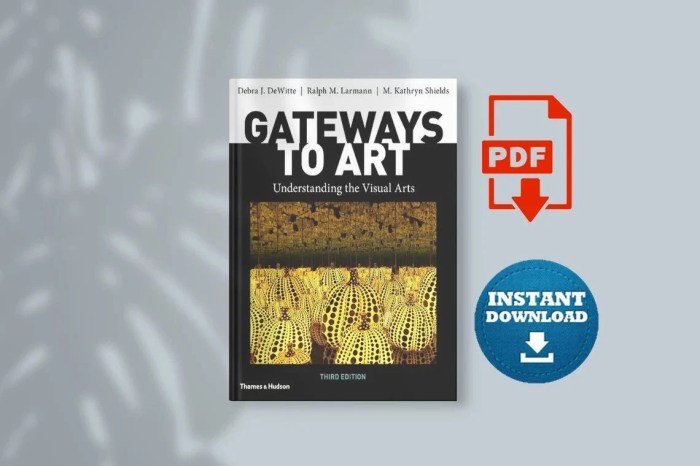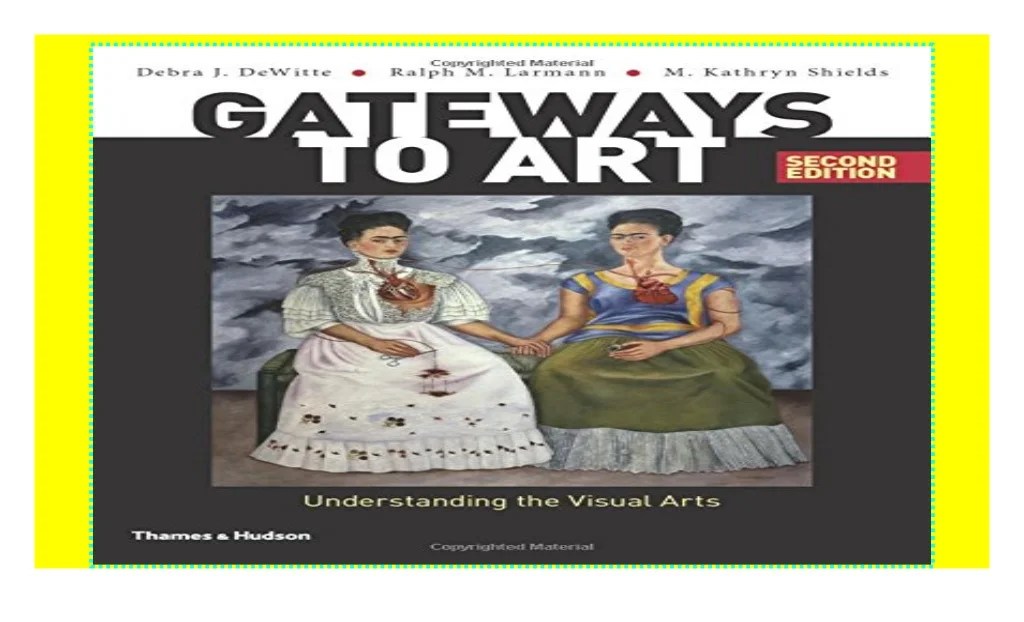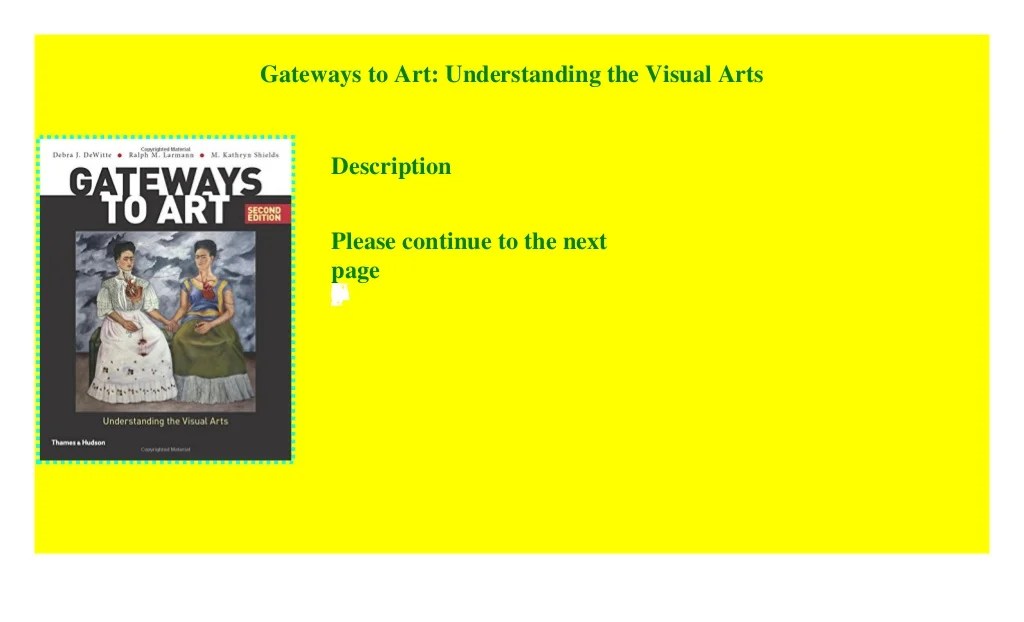Gateways to art understanding the visual arts fourth edition pdf – Gateways to Art: Understanding the Visual Arts, Fourth Edition, invites readers on an immersive journey through the world of art, offering a comprehensive exploration of its elements, principles, history, and significance. This esteemed publication serves as an invaluable resource for art educators and enthusiasts alike, providing a foundational understanding of visual arts and fostering a deep appreciation for its multifaceted nature.
Delving into the fundamental elements and principles of art, the book elucidates concepts such as line, shape, color, texture, space, and composition. Through captivating examples drawn from renowned artworks, readers gain a tangible understanding of how these elements interact to create visual harmony and convey artistic intent.
Gateways to Art Understanding: The Fourth Edition: Gateways To Art Understanding The Visual Arts Fourth Edition Pdf

The Fourth Edition of “Gateways to Art: Understanding the Visual Arts” serves as a comprehensive and accessible guide to the appreciation and understanding of visual arts. It aims to provide a solid foundation for students, art enthusiasts, and anyone seeking to deepen their knowledge of the subject.
This publication is intended for a diverse audience, including students pursuing art-related degrees, individuals exploring the arts for personal enrichment, and professionals seeking to enhance their understanding of visual culture.
Visual Arts Fundamentals

The elements and principles of visual arts form the building blocks of artistic expression. These fundamental components provide a framework for understanding and analyzing artworks.
Elements of Art
- Line: A mark with length and direction, used to define shape, contour, and movement.
- Shape: A two-dimensional area defined by a boundary, either geometric or organic.
- Color: A property of light that affects the appearance of objects, often used to convey mood, emotion, and symbolism.
- Texture: The surface quality of an object, perceived visually or tactilely, contributing to the illusion of depth and realism.
- Space: The area within or around an artwork, creating a sense of depth and perspective.
Principles of Art
- Balance: The distribution of visual elements to create a sense of equilibrium and stability.
- Contrast: The juxtaposition of different elements to create visual interest and emphasis.
- Emphasis: The focal point or area of an artwork that draws the viewer’s attention.
- Harmony: The pleasing arrangement of elements that creates a sense of unity and coherence.
- Movement: The suggestion of motion or dynamism within an artwork, creating a sense of energy and fluidity.
Art History and Movements

Art history encompasses the study of artistic styles, periods, and movements throughout history. It provides a chronological framework for understanding the evolution of visual art.
Timeline of Major Art Movements, Gateways to art understanding the visual arts fourth edition pdf
- Ancient Art (prehistoric to classical Greece and Rome)
- Medieval Art (early Christian to Gothic)
- Renaissance Art (14th-16th centuries)
- Baroque Art (16th-18th centuries)
- Neoclassicism (18th-19th centuries)
- Romanticism (19th century)
- Impressionism (19th century)
- Post-Impressionism (late 19th century)
- Fauvism (early 20th century)
- Cubism (early 20th century)
- Surrealism (20th century)
- Abstract Expressionism (20th century)
- Pop Art (20th century)
- Minimalism (20th century)
- Conceptual Art (20th century)
General Inquiries
What is the intended audience for Gateways to Art: Understanding the Visual Arts, Fourth Edition?
Gateways to Art is designed for a wide audience, including art educators, students, and anyone with an interest in gaining a comprehensive understanding of the visual arts.
How does Gateways to Art approach art appreciation?
Gateways to Art encourages a multifaceted approach to art appreciation, guiding readers through various methods such as formal analysis, iconography, and contextual interpretation.
What are some of the key art movements covered in Gateways to Art?
Gateways to Art provides a comprehensive overview of major art movements, from ancient to contemporary times, including Renaissance, Baroque, Impressionism, and Modernism.
